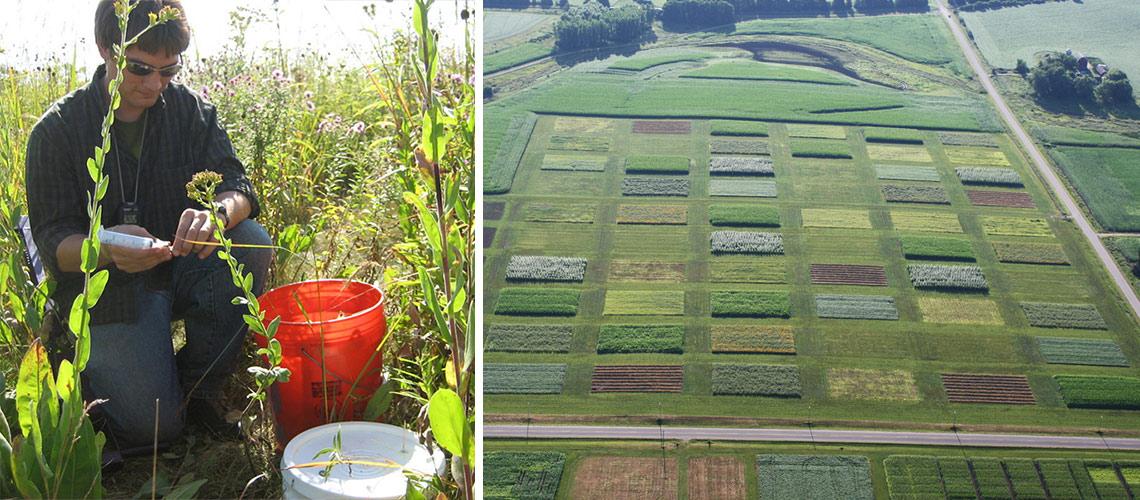
Scientists at the University of Wisconsin–Madison and Michigan State University (MSU) report today that emissions of the potent greenhouse gas nitrous oxide (N2O) can be reduced significantly by replacing annual biofuels feedstocks, such as corn, with second-generation, perennial feedstocks such as switchgrass.
“If we are going to add second-generation biofuel crops to the landscape, we need a better sense of how they’ll impact ecosystem processes such as greenhouse gas emissions,” says Gary Oates, research scientist in the Great Lakes Bioenergy Research Center (GLBRC) Sustainability group and the paper’s lead author.
The study, published in the journal Global Change Biology–Bioenergy, compares eight different biofuel cropping systems planted at both UW–Madison’s Arlington Agricultural Research Station and MSU’s Kellogg Biological Research Station.
So-called “first-generation” biofuel crops in the study include corn, soybean, and canola, which need to be replanted each year. Second-generation crops include switchgrass, miscanthus, poplar, a mixture of native grasses, and a prairie mix. These perennial crops require an “establishment phase” after planting, a few years during which they settle into a “production phase.”
“We understand annual systems like corn really well but, up till now, little research has been done on perennial N2O emissions during that establishment phase, when farmland has just been converted to a perennial system,” says Oates.
Emissions data collected during the first three years of the long-term experiment indicate that cumulative N2O emissions from fertilized second-generation cropping systems were 57% lower than emissions from first-generation systems. In addition, cumulative N2O emissions from unfertilized second-generation cropping systems were 85% lower compared to first-generation systems.
If second-generation biofuel crops can meet productivity needs with fewer fertilizer inputs, the study suggests, they have the potential to dramatically reduce N2O emissions compared to the first–generation crops used for almost all of today’s biofuel production.
But the researchers also conclude that the relationship between N2O flux and environmental conditions is not generalizable across numerous and varied cropping systems, indicating that the computer models currently used to predict N2O emissions, especially for perennials, need improvement.
“We’ve definitely gained a better understanding of biofuel cropping systems, but the underlying mechanisms driving N2O production remain elusive,” says Randy Jackson, co-leader of GLBRC’s Sustainability research group. “The amounts of water, nitrogen, and carbon in the soil are clearly important but we have more work to do.”
The first phase of the analysis used data collected between 2009 and 2011. Researchers are now in the process of analyzing an additional three years of data collected during the production phase of the perennial systems. A primary focus of the current work is gaining a better understanding of the genetic make-up of the soil’s microbial community and how knowledge of that genetic make-up might be used to predict N2O emissions for biofuel cropping systems.